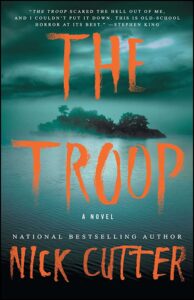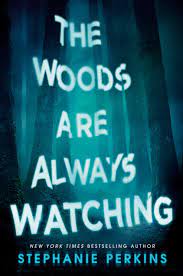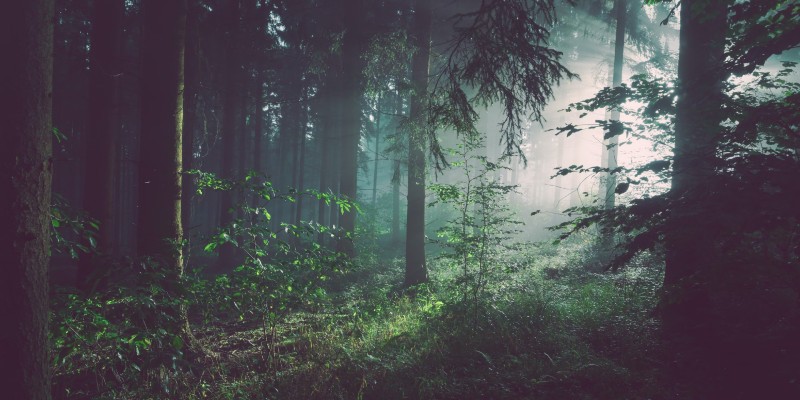What is it about being alone in the woods that’s so frightening? Is it a fear of predators, disorientation, or a sense of vulnerability? What about the inability to call for help or a fear of the unknown? Or, what if the most pulse-pounding element is simply your imagination, feeding off a lifetime of consuming thrillers set in the deep, dark woods?
Growing up, I spent my summers at a lakeside cabin situated a few miles down a narrow dirt road. Once the car bounced off the pavement onto the gravel and houses gave way to a dense forest, it felt as if I entered a different world. I relished the campfire tales and late-night walks to the pitch-black cemetery situated unsettlingly close to our cabin.
My imagination ran wild and unfettered out there. A snap of a branch sent my heart pounding. An animal’s claws clicking on a brick path had me cowering under the covers. In a secluded and lonely little cabin, rational thoughts seemed to slip away as darkness fell. Cut off from people and communication – to this day, there’s no internet connection, and good luck getting a cell signal – it was easy to conjure nail-biting scenarios.
Those nights filled me with a love of all things scary, but as I got older, the isolation of our cabin in the woods brought out new fears in me. Gone were days of looking for ghost lights in the cemetery. Now, I peered nervously into other empty cabins and wondered, who could help me if something happened?
It was that thought, and that setting, that eventually morphed into an idea for my debut thriller, The Three Deaths of Willa Stannard.
When journalist Willa Stannard is found dead from an apparent suicide, her sister Sawyer knows it’s not possible. Sawyer plunges into a desperate search for the truth and learns Willa was writing a true crime book about the decades-old disappearance of a toddler in a small lakeside community. She begins to trace her sister’s steps, deep into a community she can’t begin to understand and to a truth that could destroy her as easily as it did Willa.
When writing The Three Deaths of Willa Stanard, I knew I wanted to incorporate an isolated lakeside cottage not unlike the one where I spent my summers as a kid. Sawyer’s investigation takes her to a tiny cabin on a dead-end road with few neighbors. When a child goes missing from a place like this, there’s only one road out, but miles of forest and lake. Juxtaposed with a dual setting in Chicago, the remoteness of the woods is starker. The main character feels as if she’s entered a different world, where she can rely on only herself for help.
In that way, the setting can become its own character. It makes an indelible mark on the story. The plot couldn’t march forward the way it does without the eerie isolation of the woods.
Here are five thrillers that use a secluded, wooded setting to lead you into dark tales.

In the Woods by Tana French
In the summer of 1984, three children don’t return home from the dark and silent woods bordering their neighborhood. Police find only one child, gripping a tree trunk in terror, unable to remember any details of the previous hours. Twenty years later, that same boy is a detective who finds himself investigating the murder of a young girl found in the woods – a case eerily similar to the one haunting his past.
In this small Dublin town, the woods tie together the past and present, and the setting adds to the moody, shivery darkness of IN THE WOODS.

The Troop by Nick Cutter
Each year, Scoutmaster Tim Riggs leads a troop of boys into the wilderness for a camping trip. But when an extremely thin and voraciously hungry intruder stumbles into their camp, Scoutmaster Riggs and the boys are exposed to something more frightening than a campfire tale.
Set on a remote island off the coast of Prince Edward Island, horror/thriller The Troop takes wilderness survival to a new level.

Deliverance by James Dickey
On a remote white-water river, four men embark on a canoe trip. What starts as these middle-aged men’s last chance for an adventure on a river that’s scheduled to be damned into a reservoir quickly becomes a fight for survival when their party is attacked. What follows is an action-packed, at times violent, tale of survival.
James Dickey’s incredibly descriptive writing brings the Georgia wilderness to life. Perhaps even more spellbinding than its cinematic adaptation, this 1970 debut novel is a riveting ride into the beauty and deadliness of the woods.

Final Girls by Riley Sager
Quincy Carpenter is the sole survivor of a mass murder at a remote cabin in the woods. Branded a “final girl” by the press, she buries her trauma. But when another final girl, a survivor of a sorority house massacre, dies by apparent suicide, Quincy is forced to confront her spotty memories of that fateful night.
The flashbacks to Pine Cottage are reminiscent of scenes from classic horror movies: a secluded cabin in the Poconos, a gaggle of college-age kids, an attacker, and a bloody run through the woods. Final Girls plays off the slasher-in-the-woods trope, and it delivers a twisty, gripping story of surviving an attack while isolated in the woods.

The Woods Are Always Watching by Stephanie Perkins
High school graduates Josie and Neena embark on a three-day backpacking trip before their looming separation. The girls are novice campers, underprepared and uneasy with the wooded terrain. When they take an off-trail detour, they realize a predator is lurking deep in the forest.
Set in the Pisgah National Forest of the Blue Ridge Mountains, The Woods Are Always Watching offers vivid descriptions that immerse the reader in the terrifying isolation of a backpacking trail where evil watches from the shadows.
***


















